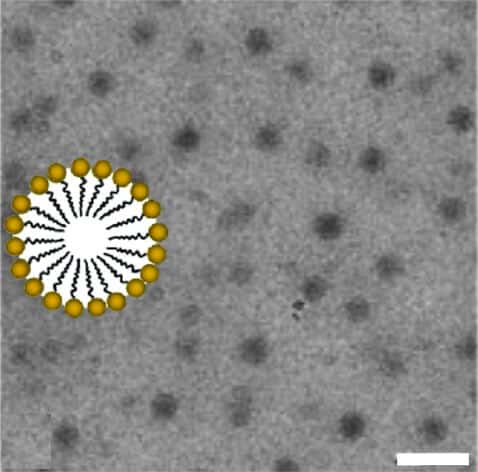What was the first chemical entity that met the basic conditions for life?

The question of the beginning of life is one of the most important unsolved problems of science, and there is no consensus on it. The leading opinion in the scientific community is that the origin of life is in the molecules of the genetic material RNA, which are known for their ability to replicate, but for 25 years Prof. Doron Lantz, from the Department of Molecular Genetics at the Weizmann Institute of Science, swims against the current in the ancient soup. The origin of life is not in a single molecule such as RNA, he says, but in clusters of different chemical compounds that were formed and replicated in their entirety. Already at the beginning of the road, Prof. Lanzet developed A model of computational chemistry Clearly showing the feasibility of the alternative approach, but this model remains largely a theory. Now, in two new articles, he and fellow research students Amit Kahane and Svetlana Maslov arm themselves for the first time with experimental evidence, and hope that this will help change the answer to the question: Where did we come from?
Life, according to the American space agency NASA, is a chemical system that is capable of replicating itself and undergoing evolution. Therefore, the answer to the question of the beginning of life lies in the search for some chemical entity that fulfills these conditions. One of the fundamental problems with the identification of RNA as the first replicating entity is that for this it is necessary that in the primordial soup - the primordial and chaotic environment in which life began - the first RNA molecule will miraculously form. In the eyes of Prof. Lantz and other opponents, this hypothesis is not reasonable at all: "An RNA molecule capable of replication consists of dozens and even hundreds of molecular units of very specific types. These have to be 'needed' from a soup containing millions of types of molecules, and even arrange themselves in an exemplary linear order for replication to occur. A small mistake in this chariot act - and the replication collapses." The proponents of RNA themselves admit the distinct shortcomings of the model, but claim that no one has proposed a suitable alternative.
What preceded RNA?
Indeed, if not RNA - who was the first "replicator"? The opponents of the RNA paradigm have maintained for many years that the answer to the question cannot be found at the level of the single molecule. "The living cell," says Prof. Lantz, "does not reproduce as a single molecule but as a collection of molecules." Inside the cell, mutual chemical reactions occur and are catalyzed, which are responsible for the absorption and production of additional copies of all the molecules that make up the cell. This is how the pool of cellular molecules grows, and later divides, with the offspring resembling the 'father' and each other. "The initial replicating collection of molecules that the scientists propose as an alternative candidate is a "micelle" - a nanoscopic sphere composed of lipids. Lipids are molecules with a unique property: they consist of a head that "loves" water and a tail that "hates" water and "loves" fats. This structure allows lipids to form the membrane that surrounds every living cell, and at the same time to spontaneously form much smaller micellar globules, which also have a lipid interior and a hydrophilic perimeter.
Unknowingly, we encounter micelles every day, since soap is composed of lipid-like detergent substances. The micelles formed from soap in contact with water make it possible to remove fatty substances from dirty hands, by trapping the fats in the inner, fat-loving part of the micelle. At the same time, it has already been demonstrated in the past that lipids could have formed on the ancient Earth and even reached it in meteorites. Previous studies by Prof. Lantz even presented evidence that micelles were formed in the ancient soup with infinitely greater odds than those of RNA, and that replication of micelles could occur in many different molecular compositions, in contrast to the selective RNA that requires very specific molecules.
Proposition that micelles are at the basis of the beginning of life is now receiving experimental validation from an unexpected direction: the chemical industry. BThe first article Of the two, Kahana and Prof. Lantz describe a treasure trove of old and new studies from this world, which strengthen the micellar model and present extensive experimental evidence that lipids, contrary to what is accepted by biologists, are able to catalyze chemical reactions. In this, support was found for the idea that there may be mutual acceleration between the components of the chemical reaction network in the micelle, which is essential for the replication phenomenon, or in other words - for life. At the same time, the scientists found a reference in articles from the field of the chemical dynamics of lipids, which were recently published and aimed specifically at examining the computer model previously developed by Prof. Lentz and his group. These articles point to direct evidence that micelles are able to copy their molecular composition, while growing and dividing - that is, to undergo replication just like modern cells, as the model predicts.

How did the micelle evolve?
And what about the ability to evolve? Considering that copying errors in the replicating micelle happen easily, we have replication with mutations, and on this, as we know, Darwinian evolution is based. Accordingly, the research team presents the stages in which, given the ability to undergo evolution, the micelles will gradually turn into more complicated molecular clusters called proto-cells, on the way to cells similar to those of modern-day creatures. In support of this opinion, as described inThe second article, the team found experimental evidence in publications from the field of biochemistry that chemical groups on the surface of lipid clusters are capable of specific molecular recognition, similar to that found in modern proteins. This is another evidence for the ability of lipid micelles to serve as a primary seed for the emergence of life.
The micellar model for the beginning of life does deal with the history of the Earth, but it also has implications for human behavior throughout the solar system. The reason that NASA is busy defining life is not accidental, since the space agency is looking, at this very moment, for clues to the existence of life on Mars. The prevailing working assumption is to search for RNA, but the new papers suggest that the probe traveling around Mars would be better off looking for evidence of other kinds of chemistry as well. "The possibilities for developed life on different planets are extremely diverse," says Prof. Lantz, "but we believe that the early and simple beginnings of the type of lipid micelles may be common to life in many places in the universe, so we should also invest in the search for them."
More of the topic in Hayadan:
- Prof. Doron Lantz, Weizmann Institute of Science, at the 11th PMI conference: "IT and processing capabilities are critical and essential for understanding the human genome"
- The first historical model for the formation of life received a significant boost
- Toolbox
- A step forward on the way to creating the first synthetic bacteria
- A new model of primary cells, in the laboratory
